Just a handful of years ago, people laughed when the first personal transport vehicles hit the market. In comedy clubs across the nation, the product was a punchline for every joke about how lazy people had become. Once that initial reaction passed, though, people began to consider just how useful it would be to have a vehicle, which could be carried in a backpack, that would enable them to make a trip to the restaurant half a mile away without having to get in their car. Now, more and more people are starting to see the light and are realizing just how big of an impact a hoverboard can make in increasing efficiency – and the fun factor – in their lives.
In order to help you make a better buying decision, we thoroughly researched and compared 30 different hoverboards to create this list of the five best units, as well as a general buying guide and comparison chart.

Best Overall: EPIKGO Self-Balancing Scooter Hoverboard
The EPIKGO is truly a gem among electric hoverboards. With power for days and all-terrain tires capable of handling even the roughest terrain, this state-of-the-art scooter boasts unmatched versatility in the world of personal transport.
Its high-performance 400-watt dual motors make the EPIKGO one of the most powerful hoverboards around. This power means no worrying about whether it can maintain good speed when faced with minor hills or a heavy rider. In addition, its UL 2272 rating ensures that all of this power can be charged and used safely.
And with a maximum weight capacity of 240 lbs. along with a top speed of 12 MPH, this is impressive performance, indeed. The EPIKGO is also waterproof and has a larger standing deck than other models. For adult riders who may find the platform of competing models a little cramped, this translates into a much more stable feeling when riding atop the board.
Along with being more robust in general, there is another aspect of the EPIKGO that sets it apart from the competition, which is that it can handle off road travel with ease. The vast majority of electric hoverboards are designed to travel on man made surfaces only. Traveling across even a smooth lawn often means carrying the board. The EPIKGO, on the other hand, has extra wide tires that can handle sand, gravel and even mud. While it is obviously not an all wheel drive monster truck, its ability to handle varied terrain and conditions is pretty much unmatched in the world of hoverboards.

Segway miniPRO Smart Self-Balancing Scooter Hoverboard
The Segway miniPRO is an extremely popular, top-of-the-line hoverboard that offers a slew of hi-tech features.
Segway, a pioneer in the world of personal transportation devices, used to be a name that was synonymous with the industry. In the miniPRO, Segway offers a device that combines their experience and the prestige of the name into a personal transportation vehicle that has design and legal advantages few can match.
A quick glance at the Segway miniPRO will reveal just how different it is from the other hoverboards out there. Instead of simply having a platform to stand upon, the miniPRO comes with a vertical knee bar. This knee bar creates leverage between the rider’s knees and feet. Such leverage means a more stable stance and improved fine control of the vehicle.
With a whopping 800 watts of total power, the dual motor Segway miniPRO has power to spare and is capable of easily pushing riders up any reasonable incline. And its UL 2272 certification provides assurance that all of this power is safe from electrical or heat issues.
A cool feature of the Segway miniPRO is its bluetooth capability. With an app on an iOS or Android phone, users can change certain settings on the board and even put it into secure mode to lock it. The miniPRO is even capable of alerting the owner through this app if someone attempts to steal the unit.
There is one disadvantage of the miniPRO for anyone who likes to go fast – its speed regulation system. With its massive motor power, there is no doubt that the miniPRO is capable of much higher speeds than its 10 MPH rating. Since it is marketed as a solution to those with medical issues that make walking difficult, Segway put more emphasis on safety and control than most hoverboards.
The maximum speed rating is electronically determined and enforced. In other words, upon reaching maximum speed, the miniPRO actively slows itself down. This is a great feature to keep the vehicle from speeding out of control with a rider who is incapable of hopping off. For those who like to push the vehicle to the maximum speed, though, this means the miniPRO has an annoying habit of trying to slow down when they want to keep going fast.
With its tremendous power, solid manufacturer track record and increased accessibility, the Segway miniPRO is an excellent option for those who want a personal vehicle they can take just about anywhere.

Best Value: Razor Hovertrax 2.0 Hover Board
If you’re looking to get the best “bang for your buck,” you really don’t have to look any further than the Razor Hovertrax 2.0. What makes this hoverboard such a great value is its combination of features that are nearly as good as those found in top end models, but with a price tag that one would expect to find attached to much lesser products.
The dual 350-watt motors of the Razor Hovertrax 2.0 is only slightly less powerful than the EPIKGO and will allow a rider weighing up to 220 pounds to travel up to 8 mph. So while many consider the Razor brand to be one that makes products only for children, this power indicates otherwise.
Another great feature of the Razor Hovertrax 2.0 that adds tremendous value is its easily changeable 36-volt lithium ion batteries. Taking an extra charged battery with you effectively doubles the range of the board.
With performance that approaches benchmarks set by top end hoverboards and a price that’s more than reasonable, you simply won’t find a better deal than the Razor Hovertrax 2.0.
4 Swagtron T1 Hoverboard
The Swagtron T1 is a very popular hoverboard that offers good performance with no frills. It is UL 2272 certified and has a pair of less powerful, but still respectable, 250-watt motors that can power up inclines of 15 degrees with a 220 pound rider, making it suitable for kids and adults to use. Additionally, it can reach maximum speeds of up to 8 mph and will allow you to travel up to 11 miles on a single charge.
If there was one negative aspect of the Swagtron T1, however, it would be that its exterior housing and fenders are made of a plastic material that isn’t as durable as it could be. Many owners of this hoverboard have claimed that it has a tendency to crack, get scratched and, on very rare occasions, shatter altogether when subjected to collisions. And for those just learning to ride a hoverboard, collisions are almost inevitable.
In other words, expect the Swagtron T1 to begin showing a few battle scars pretty early. While this has no impact on the quality of the ride, some may want to consider paying a little more to get a hoverboard that is less prone to picking up cosmetic damage.
5 Best Budget Model: SagaPlay F1 Self-Balancing Scooter Hoverboard
The SagaPlay F1 is one of the most affordable hoverboards on the market, and is a great choice for those who have never ridden one of these awesome machines before and are looking for a good starter model.
Perhaps the biggest thing that sets the SagaPlay F1 apart from other inexpensive hoverboards is its UL 2272 certification. While it’s pretty much expected for top end models, the stringent testing and exacting standards required to meet the certification requirements can often times be outside the budget of some of the companies that manufacture the low end models. And if you care about safety at all, a lack of certification should be a deal breaker.
Another great feature the SagaPlay F1 offers is its learning mode, which makes the board a little less sensitive to foot pressure, enabling new riders to get a feel for the posture and balance required before having to cope with the touchy responsiveness that all hoverboards tend to have.
One downside of the SagaPlay F1, however, is that it does have a rather subpar motor compared to some of the better models out there, so don’t expect zippy performance for any rider heavier than about a hundred pounds or so.
Buying Guide: How To Choose The Best Hoverboard
 The first question most people ask when you mention hoverboards is, “Aren’t those the electronic skateboards that randomly burst into flame?”
The first question most people ask when you mention hoverboards is, “Aren’t those the electronic skateboards that randomly burst into flame?”The technology behind the hoverboard was adapted from electric bicycles. There are a couple of key differences between hoverboards and electric bicycles, though, that put more stress on hoverboard motors and batteries. First, the smaller wheels of hoverboards translates to motors that are running at higher RPMs (Revolutions Per Minute). Along with this higher motor speed comes faster battery drain. Faster battery drain means more heat generated by the flowing electricity. The issue is compounded by the fact that hoverboard batteries and motors are generally more enclosed than those on electric bikes. To top it all off, the earliest models of hoverboard were cheaply produced and more of an experiment than anything. With all these factors in play, many of the early hoverboards did indeed fail in spectacular and dangerous ways during use or charging.
All of these issues have been tweaked and accounted for in quality hoverboards. To ensure that you get a model that will not fail electrically or overheat, look for the UL 2272 rating. This is a rating specifically for hoverboards that requires a rigorous testing process to prevent these problems.
Choosing the right hoverboard for your needs can be a difficult task. Since it is such a new product, there are really no standards by which to compare the capabilities of different models. There are several key features to compare to get the best fit:
- Speed
- Power
- Battery Life
- Terrain Handling
- Legal Status
Speed
How fast does a hoverboard travel? To have perspective on this number, we need to have something to compare it to. An average human walking travels at two or three MPH. The fastest recorded sprinting speed for a human is almost 28 MPH. The top speed for hoverboards is generally between 5 and 10 MPH, making them about as fast as a steady jog to a comfortable run.
There are a few things to be aware of when comparing speeds, though.
First, since there is no rating standard for hoverboard speed, treat any listed speed as an estimate, and a generous one at that. Obviously, manufacturers are going to want to portray their product in as positive a manner as possible, so testing is generally done in ideal circumstances – flat ground with weight the unit can comfortably handle.
Secondly, some manufacturers rate their hoverboards using MPH (Miles Per Hour), while others do so with KPH (Kilometers Per Hour). When comparing the speed of two boards, be sure to make a conversion if their rating unit is different to compare apples to apples.
Once you are comparing apples to apples and understand that the number should be taken with a grain of salt, higher is generally faster.
Power
The power of a hoverboard can determine whether that speed rating is accurate for the specific use to which the board will be subjected. For example, say two boards each boast a top speed of 10 MPH, if the first is rated for a 150 pound rider on flat ground and the second a 220 pound rider up a middling incline, the second one is going to be more consistently able to maintain its speed because it has more power.
Since, again, there is no standard for testing these things, the best benchmark of a given hoverboard’s power is its motor rating. The power of electric motors is generally accepted to be a product of its wattage rating. In other words, a 400 watt motor can be expected to be roughly twice as powerful as a 200 watt motor. It can also be expected to use roughly twice as much electricity. While this is not an exact thing because of different motor efficiencies and many physics factors, it is our best way of comparing the power of two motors short of running them side by side and measuring the torque they generate.
In addition to the wattage rating, in hoverboards, many will sport dual motors. Dual motor hoverboards can be thought of roughly twice as powerful as single motor models with the same wattage rating on all motors involved. Again, it is not precise, but is a good rule of thumb.
Battery Life
How long a battery charge lasts is the most difficult thing for a manufacturer to rate, and the one that should be most treated as an average estimate. In fact, battery life on hoverboards is so inconsistent that it can be almost ignored.
The quality models almost universally state that their battery will last an hour per charge, or the top speed equivalent of an hour. Many people who buy hoverboards for their children report that the child can ride it around the house for three or four hours between charges. Why? A 50 pound child traveling at far less than full speed on flat ground is going to use much less electricity than an adult powering up hills at maximum speed.
Because of the many factors that can change it, there is no real way of determining how long a hoverboard charge will last but personal testing. If high stress factors (heavier rider, hills, high speed) are present, expect to get less than that hour of run time. For such a situation where you really want to maximize the travel potential of the board, look for a model that allows easy changing of batteries and use spare batteries to extend the travel time.
Terrain Handling
For most hoverboards, a well maintained sidewalk is terrain as adventurous as they are capable of handling. Some make this far more comfortable by using inflatable tires that absorb shock better than the hard rubber tires found in many boards. A very few are designed to handle travel in rougher or wet terrain. If the board will be called into such duty, be sure to get one of these or risk the board being useless or actually damaged by the attempt.
Legal Status
While not a concern for everyone, the way the law in a given jurisdiction sees hoverboards can have a big impact on some users. In most places, most hoverboard models are treated as electric skateboards and are not permitted anywhere a normal skateboard would not be. Some jurisdictions treat specific models as alternative transportation solutions to wheelchairs or mobility scooters. A very few might treat any hoverboard as such a mobility option.
If you’re planning to use the board as a wheelchair or scooter replacement, be extra sure that the model being considered will be legally treated as such in the area in which you plan to use it.
Hoverboards are a new and cool travel option. People every day are discovering new ways they can improve their lives. By matching the right board to the rider and use it will see, you can ensure that this new technological experience is a positive one.
Comparison Chart
Our Top Pick
$$$$$
800W (400W Dual Motors)
12 MPH
10 miles
240 lbs
Yes
31 lbs
9″ x 9″ x 28″
Best Value
$$$
700W (350W Dual Motors)
8 MPH
8-10 miles
220 lbs
Yes
27 lbs
7″ x 8″ x 24″
Best Budget Model
$
500W (250W Dual Motors)
10 MPH
9 miles
220 lbs
Yes
22 lbs
7″ x 7″ x 24″
Top Rated
$$$$$
800W
10 MPH
14 miles
220 lbs
Yes
28 lbs
21″ x 10″ x 34″
Good
$$$
500W (250W Dual Motors)
8 MPH
11 miles
220 lbs
Yes
22 lbs
4″ x 7″ x 23″
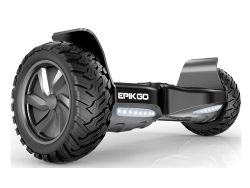
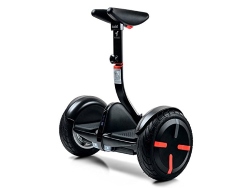
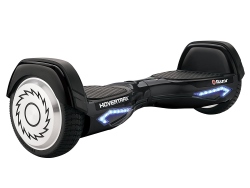
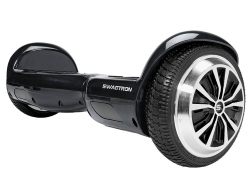
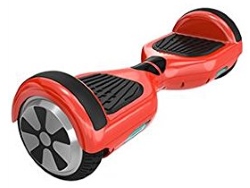
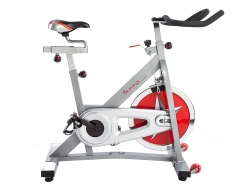 7 Best Exercise Bikes
7 Best Exercise Bikes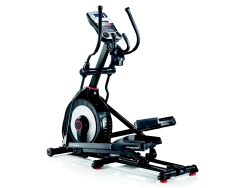 Top 7 Elliptical Machines
Top 7 Elliptical Machines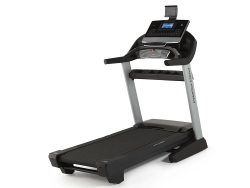 7 Best Treadmills
7 Best Treadmills Top 10 Barbecue Grills
Top 10 Barbecue Grills